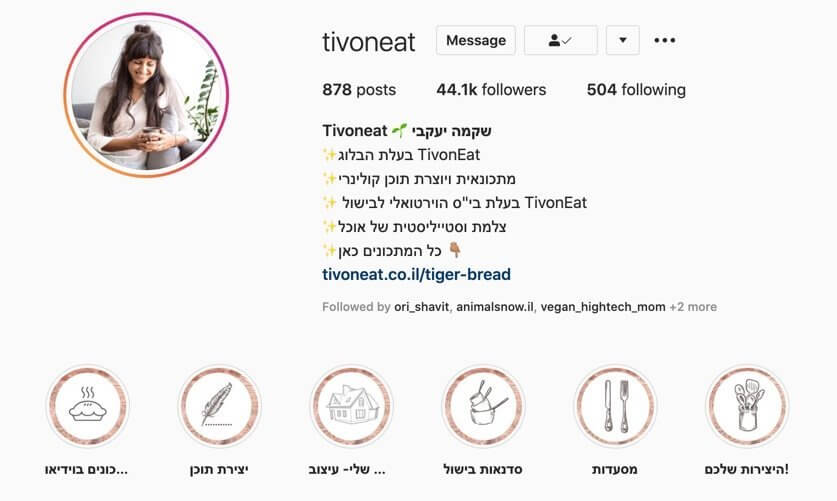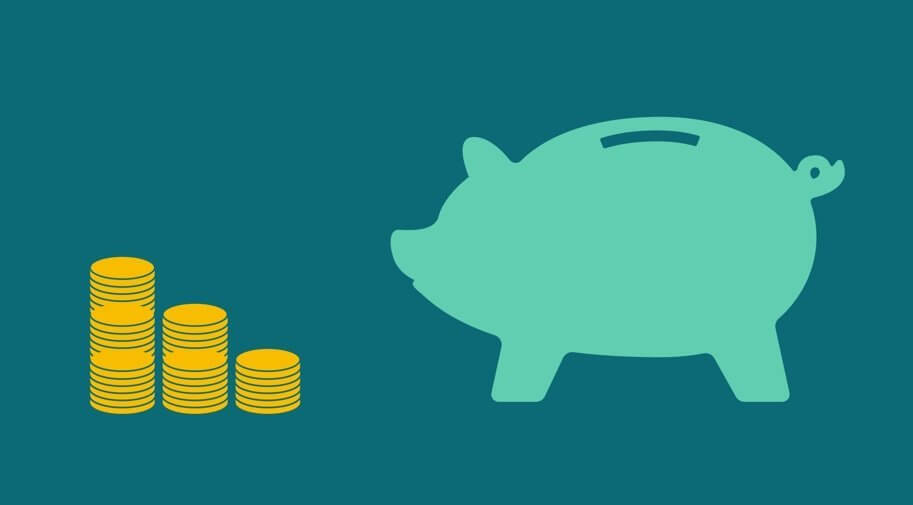What’s the difference between opinion leaders and entrepreneurs, and how can you make money from it?

There’s an endless pursuit for followers and audience growth, but it doesn’t always serve us. If your goal is to make money, it’s worth continuing to read…
So, a while back, I started helping out this client who had this cool toddler development game she created. We crunched some numbers, factoring in costs, returns, and all those nitty-gritty bits, and finally figured out how to price her product right. It came with a book, videos, and some extra stuff.
Once we had the pricing down, I did my thing – spun a story for her brand and cooked up a solid content strategy.
Then, in one of our chats, she pops the question: “Hey, would getting more Instagram followers help me out?”
Of course, I said yes.
But hold up, she wasn’t talking about just any boost in followers. She wanted to hit that magical 10,000 mark and become an influencer.
So, I paused and asked her, “What’s your main goal here?” When she said she wanted a steady income, it hit me: chasing after a massive follower count wasn’t the way to go.
See, sometimes we mix up being an influencer with being an entrepreneur.
Need me to clear things up? Hit me up.

What is an influencer?
You know those influencers, right? They’re all about racking up followers like it’s a high score in a game. They’re constantly crafting their stories, tweaking their feeds, and chatting it up with their audience.
And hey, some of them actually make some decent cash.
But here’s the thing: they’re not just banking on their fame and influence to pay the bills.
Their moolah comes from all sorts of stuff – sponsorships, pushing products with affiliate links, promoting this and that… you name it. It’s like a whole hustle game they’ve got going on.
Let’s think about travel bloggers.
A travel blogger documents their journeys around the world, writes recommendations about cities, attractions, and hotels.
This same blogger effectively manages a large following community that loves to see their content. But a travel blogger, despite not selling anything, is essentially just travelling the world. At first glance.
In reality, their passion for travelling led them to develop two key skills:
- Creating viral content that brings in more followers and grows their audience.
- Maximizing relationships with sponsors.
So that same blogger doesn’t make money from the travels themselves or from the blog; it’s essentially just the medium that proves they’re good at what they do. The blogger can offer advice to travellers, to other bloggers, conduct workshops and talks on community growth, content writing, photography, and make money from various brands that want exposure to their audience. The larger the audience, the more big companies are willing to pay for exposure.
My favorite vegan blogger, Shaked Ya’akobi, known as TivonEat, prepares vegan food that’s so delicious you could die from it. How do I know? Not because she sold me her flagship dishes, but because she freely shares her recipes on Instagram and her blog. That’s how she grows her audience.
And when she embraces nearly 50k followers, giants like Strauss and Osem want her to advertise products for them through her recipes. That’s how she created videos of recipe preparation combined with snacks. It’s genius, and everyone benefits from it.
Plus her blog? She has tens of thousands (if not hundreds of thousands) of visits to her blog every month, making her particularly attractive to advertisers who advertise on her site.
From Shakem Ya’akobi’s Instagram | Pay attention to the structure of the information and what is at the center.
So after we talked about influencers, let’s understand:

What is an entrepreneur?
Of course! Here’s a simplified version for easier comprehension:
Entrepreneurs are like the pioneers of new ideas, always coming up with fresh concepts or cool products and services.
They’re not always reinventing the wheel, but they sure know how to make it spin in a different way! They’re great at telling their stories in a way that stands out from the crowd.
Now, let’s talk about their audience. It might not be huge like influencers, but it’s where the magic happens in terms of making money.
Think about NLP coaches. They’re seen as just another service provider in a crowded market. But there are gems like Billy, a coach with a loyal following of less than a thousand.
Billy doesn’t chase after big fame. Instead, he keeps it real, sharing personal stories and wisdom with his small community. Those who connect with him see him as more than just a coach; he’s an inspiration.
In entrepreneurship, finding the balance between giving stuff away for free and selling premium content is crucial. Simon Sinek believes in sharing knowledge generously, and I agree. By giving value for free, entrepreneurs build trust and show the worth of their paid offerings.
As an entrepreneur myself, I’m all about helping others tell their stories. Recognizing that not everyone has the knack for it, I’m here to lend a hand and make sure their voices are heard loud and clear.

From Simon Sinek’s Instagram | Monetization processes and product referrals
So before we move on to tips that will help you make money from social media, I want to summarize the difference between opinion leaders and entrepreneurs.
Opinion leaders work hard to attract as large an audience as possible. The reason the audience is drawn to them is a specific niche that’s interesting and usually a hobby: vegan cooking, humorous moments about parenting, couples’ trips abroad.
The money of opinion leaders comes from the skills they have acquired due to their activity on social networks.
Entrepreneurs are people with a more business-oriented orientation, and the reason people follow them is their ability to do something that helps others. This skill translates into products and services sold to the following audience.
How can you make money from social networks too?
1. Choose the arena that suits your personality
Of course, the right way is to be on several social networks simultaneously.
But in my opinion, it’s important to know what is the main arena where you will provide most of your value.
It is known that most opinion leaders work with Instagram.
But entrepreneurs work with Facebook and mailing lists.
Choosing your arenas will allow you to manage your content and plan ahead how to reach the right audience.
No matter what you choose, remember that your audience will be more loyal if you provide real value that helps them with a specific problem or pain.

2. Engage with your audience.
Those aspiring to be opinion influencers should know that the reason brands want to work with opinion influencers is because they have particularly high engagement rates.
The higher the engagement, the more you can influence the purchase of a product or service you promote.
This is also true for entrepreneurs among you. The more you communicate with your audience, the more they will feel familiar with you and trust you.
And trust, as known, is one of the strongest purchasing factors.
My advice is to learn to write. Or more accurately, learn to write in a way that encourages engagement with the audience.
We always hope that our followers will like, comment, tag, and share our content. But we also need to respond to them, answer questions, and create deep and meaningful relationships.
Yes, it can take quite some time. I consider it an inseparable part of my work.
Whether we are entrepreneurs or opinion influencers, we need to remember that if we want to make a living on social networks, there is no escape from dedicating time every day to deepen the connection with the audience.
3. Don’t be stingy, give your best value for free.
You bet! Here’s the simplified version:
We’re all used to snagging freebies, right? Your audience expects a little something for nothing too.
The more value you dish out for free, the more they’ll want to stick around.
But here’s the catch: those freebies should have a purpose. Let me break it down with an example:
Say I want to grow my email list. So, I offer up a juicy guide on personal storytelling on my website. If I’ve played my social media cards right, folks checking out my site already know this guide is gold, making them more likely to hop on my email list.
Bam! Now, my email list is growing like clockwork.
Now, for the influencers out there, it’s a tad different.
To amp up engagement with your followers, you’ve got options. Maybe you’re a vegan guru, so you whip up a beautifully designed recipe booklet, host a cooking workshop, or spill the beans on a secret ingredient for a killer dish.
But sometimes, the value isn’t all in your hands.
Once you hit that 10k follower milestone, brands come knocking, wanting you to shout about their stuff. And hey, that’s cool! You can negotiate with them, pick the content you want to share, maybe even score some swag to pass on to your peeps.
But here’s the kicker: choose your brand partners wisely. If their stuff doesn’t jive with your audience, bail. Your followers trust you, so don’t break that bond. Selling out for a quick buck might pad your pockets, but it’ll tank your street cred faster than you can say “sellout.”
4. Create an internal dialogue about your value.
I’ve been noticing more and more folks struggling with money matters lately.
They’ll gladly shell out big bucks for someone else’s service but balk at the thought of pricing their own offerings.
Now, don’t get me wrong. If you’re just dipping your toes into freelancing and building your brand, charging top dollar right off the bat isn’t the way to go.
But it does mean you gotta keep tabs on how you’re valuing your services and how your audience sees that value.
When I started freelancing, I charged 250 NIS per hour. But as my audience grew and my reputation blossomed, I bumped up my prices.
It’s all about gauging the response and making gradual adjustments.
Now, unlike entrepreneurs who sell products or services (and time, which isn’t always the best thing to sell), influencers rake in the dough for their posts. But unless you’re a big shot like Bar Refaeli, don’t expect to cash in $3,000 per post right out of the gate.
Instead, start small, maybe $75 to $250 per post, and watch as your audience grows and engagement spikes. Soon enough, you’ll be bumping up those rates and making bank.
Whether you’re an entrepreneur or an influencer, don’t settle for the status quo.
Keep that conversation going with yourself. Is it time to up your prices? Is the value you’re dishing out truly one-of-a-kind?
5. If you’re selling something – your audience needs to know about it.
One common mistake we make is assuming our audience will stumble upon our products and services all on their own, leading to spontaneous purchases. It sounds great, but in reality, it’s not that simple.
When we promote something, we need to keep at it and not be afraid to remind our audience more than once.
Let’s keep our products and services part of the conversation so that our audience understands the value we bring.
I’ll be honest, it can be exhausting at times, especially when the results aren’t always consistent.
For example, when I launched the Storiteling Challenge for the first time, I got 72 sign-ups in two weeks. It took daily posts, conversations with interested folks, and a lot of energy.
But the second time around? Despite doing the exact same thing, I only got 34 sign-ups.
What’s interesting is that each time, there were still people who hadn’t heard about the challenge. It goes to show that repeating ourselves about our offerings ensures more people get to know the value we bring.
Selling services and products isn’t a walk in the park; it takes effort and investment. That’s why having a solid content strategy is key to boosting sales.
6. Collaborate
For both influencers and entrepreneurs, growing your audience is a must.
Teaming up with other personal brands can help you tap into new and diverse audiences that you might not reach on your own.
Look for brands that resonate with what you do but cater to a slightly different crowd. They’re not your direct competitors, but they share a similar vibe.
The more you expand your presence and collaborate with others, the more interest you’ll generate. It’s all about exploring different facets of what you offer and connecting with new people.
Collaborations are like fertile soil for your growth and spreading the value you bring.

7. Monetize from the beginning
Monetization is all about turning something that was once free into a source of income—whether it’s a community, product, or service.
Sure, providing value to our audience is great, even crucial. But whether we’re influencers or entrepreneurs, we need to think about the bottom line.
It’s tough for some of us to admit that we want to make money. There’s this idea that if we’re doing what we love, money is just a bonus. But let’s face it—money matters!
Yes, it is bad!
If we’re living our mission, engaging in our passion – we should be paid for it.
There’s no such thing as not nice.
It always amused me when they told me, “But you enjoy giving lectures, and it’s only an hour, why are you charging 4,500 NIS?”
I’ll tell you why, because I’m really, really good at what I do. Because I deliver value. And the amounts I charge allow me to reinvest some of the money back into the business and make my services and products even more precise.
Try to understand from the beginning where the options to make money from your occupation come from. In what ways do your competitors or those similar to you make their money?
If you’re an entrepreneur, you can monetize a small community (even 100 people) significantly. You can offer a service or product that will help them, and if they follow you and appreciate your value, they will pay you for your “premium value”.
If you want to be opinion influencers and reach tens of thousands of followers, think about how you can make money from the early stages. Money doesn’t mean you’re not living your mission, it just ensures you can live your mission comfortably and stylishly 🙂
In conclusion,
most business owners going freelance think about the quantity of followers and measure the audience added around them numerically.
It needs to be understood that even with Instagram with 300 people, you can make money. The secret is persistence and innovation. The more different, renewed, and interesting the value given, the more interested people will be drawn to become our audience.
If you hope to be opinion influencers and reach tens of thousands of followers, think about how to make money from the early stages. Money doesn’t mean you’re not living your mission, it just ensures you can live your mission in comfort and lifestyle.







